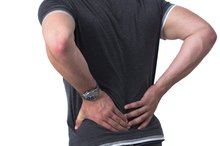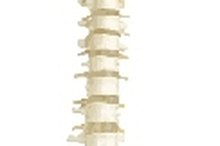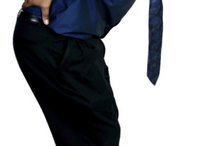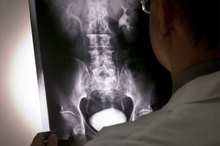Bad Posture Symptoms
The telltale signs of bad posture may develop from poor sitting, standing or sleeping habits, or from age or the onset of a genetic or chronic bone disease. If you believe that a change in your appearance or health is due to poor back posture, that may be only a symptom of a larger disorder. Slouching and back pain indicate a need for further self-evaluation. You may be able to treat habitual causes with exercises, but a chiropractor or doctor should investigate if you suspect an underlying condition.
Visible Symptoms
The American Physical Therapy Association (AMTA) notes that visible signs of poor posture in people who slouch include tilting the head forward, rounding the upper back and arching the lower back. These positions exaggerate the spine’s natural curves. The opposite type of bad posture results in a posture that is is too upright. They include holding head behind your center of gravity and having your shoulder blades pulled back, lower back arched and knees locked.
Symptoms of poor back posture that you might notice include stronger wear on one shoe than the other and an irregular walking pattern. You might notice that your neck angle is not vertical, your head tilts to the side, or that your upper body tilts when you are sitting. The American Chiropractic Association reports that these may be due to your body’s compensation for the abnormal structure of your feet or spine.
- The American Physical Therapy Association (AMTA) notes that visible signs of poor posture in people who slouch include tilting the head forward, rounding the upper back and arching the lower back.
- The American Chiropractic Association reports that these may be due to your body’s compensation for the abnormal structure of your feet or spine.
Painful Symptoms
Mild Lumbar Scoliosis Symptoms
Learn More
Habitual bad posture, such as slumping while sitting or sleeping on your stomach, can place long-term pressure on low back and shoulders, creating neck or back pain. The AMTA calls weak muscles in the lower abdomen a possible reason, which is more likely if your abdomen bulges outward or you are at an advanced age.
Back pain isn’t the only sign of questionable back posture. A skeletal problem may induce perpetual or recurrent pain in the knees, hips, ankles or neck. As your alignment changes, you may be more susceptible to muscle strains.
- Habitual bad posture, such as slumping while sitting or sleeping on your stomach, can place long-term pressure on low back and shoulders, creating neck or back pain.
- The AMTA calls weak muscles in the lower abdomen a possible reason, which is more likely if your abdomen bulges outward or you are at an advanced age.
Related Symptoms
A doctor or chiropractor who examines you may detect related symptoms in examining you for the source of poor back posture. Varying leg length may cause one shoulder and/or hip to be higher than the other. Your feet may turn inward or outward, changing the alignment of knees and ankles. Bad posture in these instances may be treated with orthopedic shoes or inserts.
Specialists at the Mayo Clinic note that these symptoms may be related to scoliosis or osteoarthritis, which can generate joint and back pain as the muscles and bone angles change over time.
- A doctor or chiropractor who examines you may detect related symptoms in examining you for the source of poor back posture.
- Your feet may turn inward or outward, changing the alignment of knees and ankles.
Related Articles
References
- Mayo Clinic: Scoliosis
- Hansraj, Kenneth K. Assessment of stresses in the cervical spine caused by posture and position of the head. Surg Technol Int. 2014;25(25):277-9.
Writer Bio
Nancy Clarke began writing in 1988 after achieving her Bachelor of Arts in English and has edited books on medicine, diet, senior care and other health topics. Her related affiliations include work for the American Medical Association and Oregon Health Plan.









